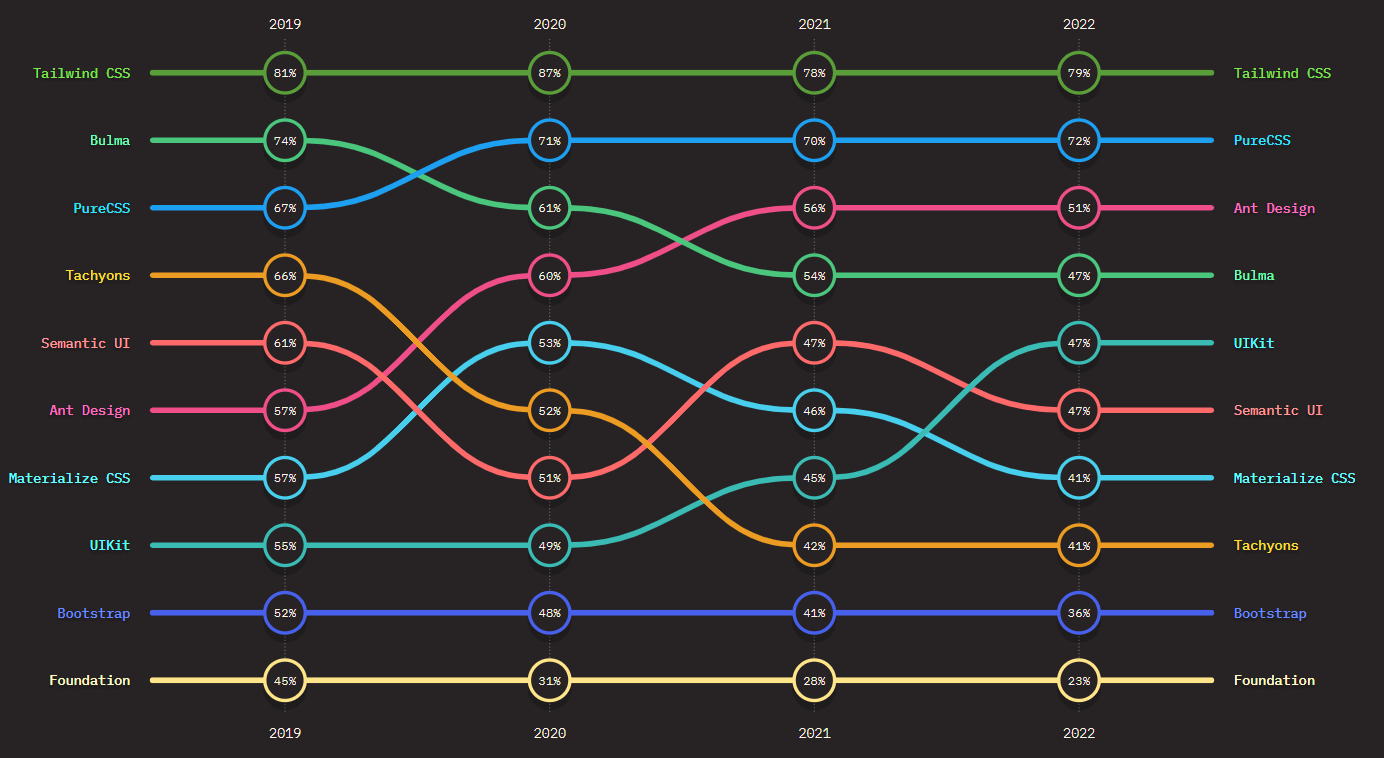
Aesthetics Meets Functionality: Latest Bulma UI Design Patterns
- Post
- August 7, 2023
- Bulma, Front-End Frameworks, Web Development
- 0 Comments
In the dynamic world of web design, finding the perfect balance between aesthetics and functionality is a perpetual quest. Enter Bulma UI design patterns – a contemporary approach that marries visual appeal with seamless usability. In this comprehensive guide, we delve into the realm of Bulma, uncovering its innovative design principles, showcasing its practical applications, and exploring the latest trends that are shaping the digital landscape.
Unveiling the Essence: What Sets Bulma UI Design Apart
Bulma, a modern CSS framework based on Flexbox, has swiftly gained recognition among web designers for its inherent flexibility and responsiveness. Its grid system, built-in modifiers, and mobile-first philosophy collectively empower developers to craft stunning interfaces that adapt effortlessly to diverse screen sizes. Beyond its utilitarian features, Bulma shines through its elegant aesthetics, offering a plethora of customizable elements that can be seamlessly integrated into a project’s visual identity.
Exploring Bulma Templates: A Playground of Creativity
At the heart of Bulma’s allure lies its repository of pre-designed templates that expedite the design process without compromising originality. These templates, infused with artistic ingenuity and functional coherence, cater to a wide array of design preferences. From minimalistic landing pages that exude sophistication to vibrant dashboards that breathe life into data visualization, Bulma templates encapsulate the spectrum of design possibilities.
Mastering User-Centric Design: Bulma’s Approach to Accessibility
Functionality, a cornerstone of user-centric design, remains a pivotal factor in the Bulma ecosystem. By adhering to accessibility standards and best practices, Bulma ensures that its design patterns are inclusive and user-friendly. The framework’s emphasis on clear typography, intuitive navigation, and ample white space fosters an environment where every user can seamlessly engage with the interface, regardless of their abilities or devices.
Navigating the CSS Landscape: Leveraging Bulma’s Styles and Modifiers
Bulma’s CSS classes and modifiers serve as a treasure trove for designers seeking to streamline their workflow and enhance visual consistency. The framework’s semantic class names simplify the process of styling elements, promoting a modular design approach. Whether you’re fine-tuning typography, adjusting margins, or orchestrating complex layouts, Bulma’s extensive array of styles and modifiers offer a nuanced toolkit to bring your design visions to life.
Elevating User Experiences: Bulma’s Interactive Components
Bulma’s commitment to elevating user experiences extends beyond aesthetics and into the realm of interactivity. The framework provides an assortment of interactive components, ranging from modals and tabs to dropdowns and accordions. These dynamic elements not only enhance user engagement but also serve as building blocks for creating immersive, feature-rich web interfaces that captivate and delight.
Effortless Integration: Harnessing the Power of Bulma CDNs
Integrating Bulma into your projects is a breeze, thanks to the convenience of Content Delivery Networks (CDNs). By leveraging Bulma CDNs, you can effortlessly incorporate the framework into your website without the need for local installations. This streamlined approach not only expedites development but also ensures that your project benefits from the latest updates and optimizations, guaranteeing a seamless user experience.
Bridging the Gap: Bulma and Modern CSS Methodologies
Bulma’s compatibility with modern CSS methodologies such as BEM (Block Element Modifier) and SMACSS (Scalable and Modular Architecture for CSS) enhances its versatility and collaboration potential. Embracing these methodologies facilitates code organization, maintainability, and scalability, making Bulma an ideal choice for projects of varying complexities and team sizes.
Unshackling Creativity: Bulma’s Customization Capabilities
While Bulma offers a plethora of predefined styles, its true prowess lies in its customization capabilities. Designers can effortlessly infuse their brand’s essence by modifying variables and tailoring the framework’s appearance to align with their vision. This level of creative control empowers designers to craft distinctive interfaces that resonate with their target audience while harnessing the underlying power of Bulma.
Future-Forward: Bulma’s Role in Shaping UI/UX Trends
As the digital landscape continues to evolve, Bulma remains at the forefront of UI/UX trends, adapting and innovating to meet the ever-changing demands of modern design. Its collaborative community, consistent updates, and commitment to pushing the boundaries of web design ensure that Bulma’s influence will be felt in the aesthetic and functional dimensions of digital experiences for years to come.
Final Words
Bulma UI design patterns transcend the conventional boundaries of aesthetics and functionality. With its Flexbox foundation, intuitive modifiers, and emphasis on user-centric design, Bulma offers a holistic approach to crafting web interfaces that captivate and engage. Its dynamic templates, interactive components, and seamless integration options further solidify its position as a leading force in modern web design.
Commonly Asked Questions:
1. How does Bulma compare to other CSS frameworks?
Bulma’s emphasis on simplicity, Flexbox-based grid system, and extensive customization options set it apart from other CSS frameworks. Its intuitive class names and user-friendly documentation make it an excellent choice for both beginners and experienced designers.
2. Can I use Bulma with other front-end libraries?
Absolutely! Bulma’s modular structure allows it to be easily combined with other front-end libraries and frameworks, providing a versatile toolkit for creating unique and feature-rich web interfaces.
3. Are Bulma templates customizable?
Yes, Bulma templates serve as a foundation that can be tailored to match your brand’s identity. You can modify colors, typography, and other elements to create a cohesive and distinctive design.
4. How frequently is Bulma updated?
Bulma maintains a proactive development cycle, regularly releasing updates to enhance features, fix bugs, and accommodate emerging design trends. Its responsive community ensures that it stays relevant and adaptable.
5. What industries benefit most from Bulma UI design patterns?
Bulma’s versatility makes it suitable for a wide range of industries, from e-commerce and corporate websites to creative portfolios and mobile applications. Its responsive nature and customizable components cater to diverse design needs.




